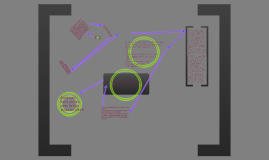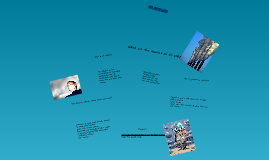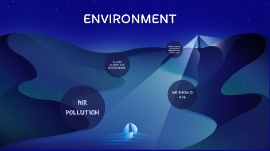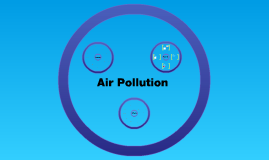Air pollution
Transcript: Air Pollution Project Miss L. 2nd period Tessa Vessels 1. Air pollution is the release of noxious gases, like sulfur dioxide, carbon monoxide, nitrogen oxides, and chemical vapors. Air pollution is the release of particles into the air from burning fuel for energy. Diesel smoke is a good example of this particulate matter . The particles are very small pieces of matter measuring about 2.5 microns or about .0001 inches. This type of pollution is sometimes referred to as "black carbon" pollution. The exhaust from burning fuels in automobiles, homes, and industries is a major source of pollution in the air. Some authorities believe that even the burning of wood and charcoal in fireplaces and barbeques can release significant quanitites of soot into the air. 2. They are particle pollution (often referred to as particulate matter), ground-level ozone, carbon monoxide, sulfur oxides, nitrogen oxides, and lead 3. power plants, cars, appliances, etc. Sadly, our continuous neglect has created the effects we are experiencing now, global warming, diminishing resources, and weather instability are some of what we are experiencing today. 4. humans, Plants, Animals, and mother earth. 5. In May 1899, the Union Improvement Company purchased 382 acres 30 miles south of Pittsburgh, Pennsylvania to form a small town called Donora located along the Monongahela River. A year later, the town was laid out and within three years a thousand buildings were built and the population grew to six thousand. On October 26, 1948, a cold blanket of air settled over the Monongahela Valley trapping sulfur dioxide from the mills. The trapping was caused by an air inversion, where cold air aloft prevents warmer, often polluted air, from rising and dispersing. Air inversion prevents clouds from forming and rain showers to occur that would otherwise clean the air. Weather fronts and pollution can cause the inversions.The residents of Donora were familiar with the sulfur dioxide odor and went about their usual routine in spite of the smell and difficulty in visibility. By noon on October 30, the yellow smog was so thick that residents could not see their hands in front of them and cars were driven with their headlights on. The air burned the throats and caused breathing difficulties. Within three days of the event, eleven people had died and thousands of others had fallen ill. The local hotel became an emergency hospital because the two surrounding hospitals were filled to capacity. The basement of the hotel became a morgue because the funeral homes were full. Firemen delivered oxygen tanks to residents who had trouble breathing. The firemen had to reach out in front of them to feel the surface of a house or a fence in order to get to where they were going because visibility was difficult. It took them 45 minutes to travel several blocks, which normally may have taken ten or fifteen minutes. Owners of the nearby zinc plant were asked to shut down, but refused. Finally, on Sunday, October 31, the plant did agree to shut down to eliminate smoke and fumes. This proved to help and soon visibility improved. It also began to rain, which helped to clear the air. The following day, the zinc plant resumed operations. The event provoked local, state, and federal governments to look at what took place in Donora and how to prevent it from happening again. Regulations were put into place and by 1955 the Pittsburgh area had cleaned up emissions by 97 percent. In 1963, the United States Congress passed the Clean Air Act and then in 1970 with the insistence of Senator Edward Muskie of Maine, the Clean Air Act was amended requiring states to reduce emissions according to federal guidelines 7. Ozone's major air pollutent for our area is ground level ozon. damages lung tissue and reduces lung function and sensitizes the lungs to other irritants. formed when pollutants react chem. in the presence of sunlight. It's a problem May through October when the weather is hot and sunny with relitivly light winds. Mortality, Hospital Admissions, Emergency room visits, asthma, respiratory symptoms. Fossil fuels burns your eys when its high. plants can die off. 9. 8. 6. The Clean Air Act (CAA) is the comprehensive federal law that regulates air emissions from stationary and mobile sources. 1970. EPA. NAAQS, carbon monoxide, lead, Nitrogen Dioxide, Ozone, Particle pollution, Sulfur Dioxide. Nonattainment-Alaska, Idaho, Oregon, and washington. 8 hour ozone standerd.

















